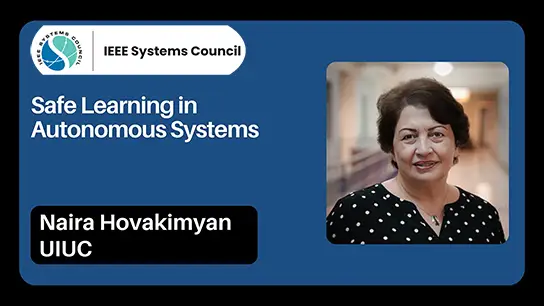Tutorials: Dynamic Multi-objective Optimization: Introduction, Challenges, Applications and Future Directions
Marde Helbig
-
Members: FreeCIS
IEEE Members: Free
Non-members: FreeLength: 01:27:17
06 Dec 2021
Most optimization problems in real-life have more than one objective, with at least two objectives in conflict with one another and at least one objective/constraint that changes over time. These kinds of optimization problems are referred to as dynamic multi-objective optimization (DMOO) problems (DMOPs). Instead of re-starting the optimization process after a change in the environment has occurred, previous knowledge is used and if the changes are small enough, this may lead to new solutions being found much quicker.
Most research in multi-objective optimization has been conducted on static problems and most research on dynamic problems has been conducted on single-objective optimization. The goal of a single-objective dynamic optimization algorithm is to find the most optimal solution and only one solution exists. However, due to the conflicting objectives of a DMOP, a single solution does not exist. Therefore, the goal of a DMOO algorithm (DMOA) is to find an optimal set of trade-off solutions that is as close as possible to the true set of solutions and that contains a diverse set of solutions (similar to static MOO). However, in addition to these goals a DMOA also has to track the changing set of optimal solutions over time. Therefore, the DMOA also has to deal with the problems of a lack of diversity and outdated memory (similar to dynamic single-objective optimization).
This tutorial will introduce the participants to the field of DMOO by discussing:
benchmark functions and performance measures that have been proposed and the issues related to each of these
algorithms that have been proposed to solve DMOO
issues with the comparison of DMOAs� performance and ensuring a fair comparison; analysing the performance of DMOAs and why traditional approaches used for static MOO is not necessarily adequate enough
challenges in the DMOO field that are not yet addressed, such as incorporating a decision maker�s preference in DMOO and visualizing the behavior of DMOAs
real-world applications
emerging research fields (such as many-objective optimization and fitness landscape analysis) that provide interesting research opportunities in the field of DMOO.
Learning outcomes
Learning Outcomes. This tutorial aims to:
Introduce participants to the field of DMOO
Create an understanding of the challenges and opportunities in the field
Create an understanding of the advantages of using computational intelligence approaches to solve these kinds of problems over more traditional approaches
Entice both researchers and practitioners to contribute to the field
Most research in multi-objective optimization has been conducted on static problems and most research on dynamic problems has been conducted on single-objective optimization. The goal of a single-objective dynamic optimization algorithm is to find the most optimal solution and only one solution exists. However, due to the conflicting objectives of a DMOP, a single solution does not exist. Therefore, the goal of a DMOO algorithm (DMOA) is to find an optimal set of trade-off solutions that is as close as possible to the true set of solutions and that contains a diverse set of solutions (similar to static MOO). However, in addition to these goals a DMOA also has to track the changing set of optimal solutions over time. Therefore, the DMOA also has to deal with the problems of a lack of diversity and outdated memory (similar to dynamic single-objective optimization).
This tutorial will introduce the participants to the field of DMOO by discussing:
benchmark functions and performance measures that have been proposed and the issues related to each of these
algorithms that have been proposed to solve DMOO
issues with the comparison of DMOAs� performance and ensuring a fair comparison; analysing the performance of DMOAs and why traditional approaches used for static MOO is not necessarily adequate enough
challenges in the DMOO field that are not yet addressed, such as incorporating a decision maker�s preference in DMOO and visualizing the behavior of DMOAs
real-world applications
emerging research fields (such as many-objective optimization and fitness landscape analysis) that provide interesting research opportunities in the field of DMOO.
Learning outcomes
Learning Outcomes. This tutorial aims to:
Introduce participants to the field of DMOO
Create an understanding of the challenges and opportunities in the field
Create an understanding of the advantages of using computational intelligence approaches to solve these kinds of problems over more traditional approaches
Entice both researchers and practitioners to contribute to the field


